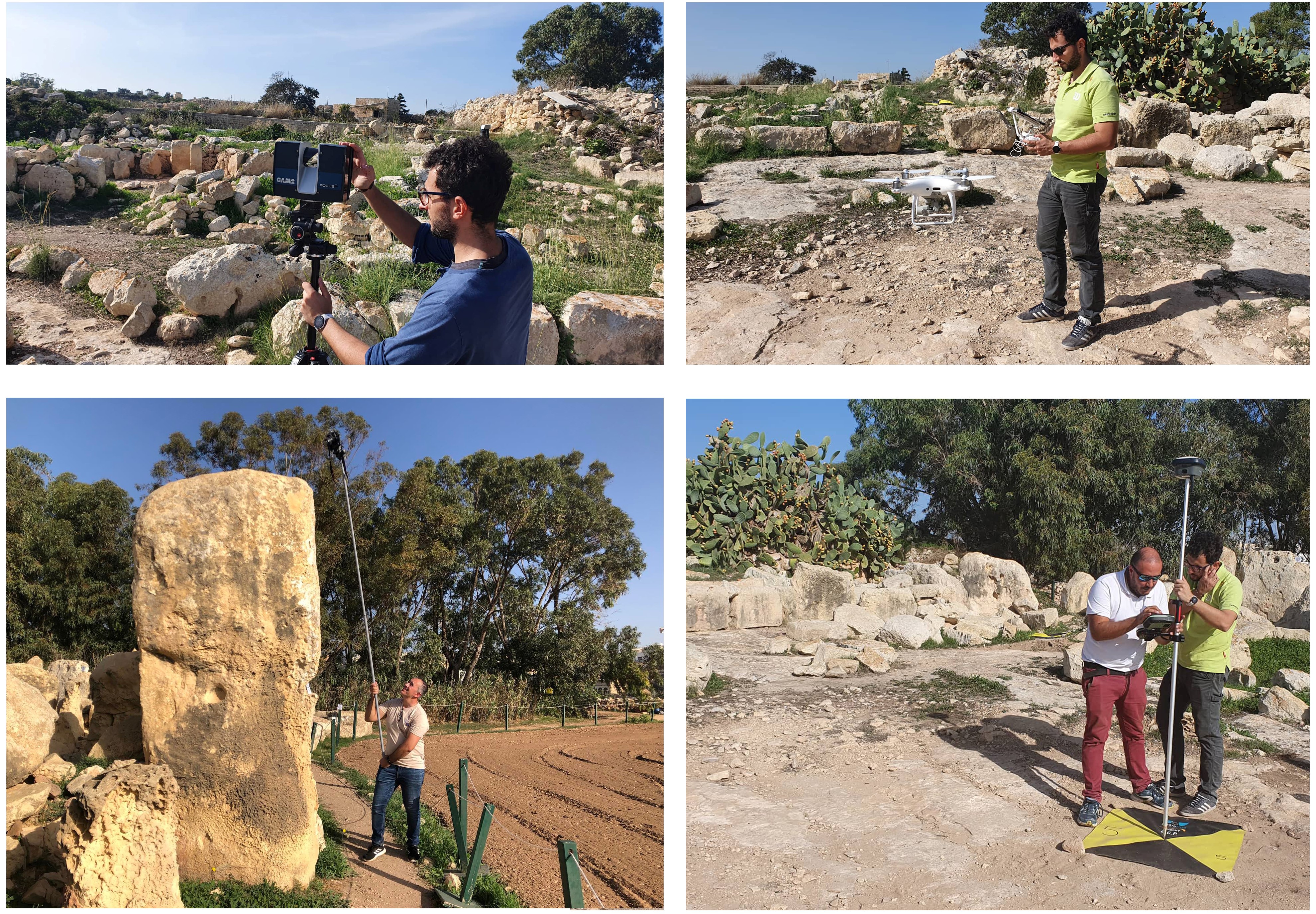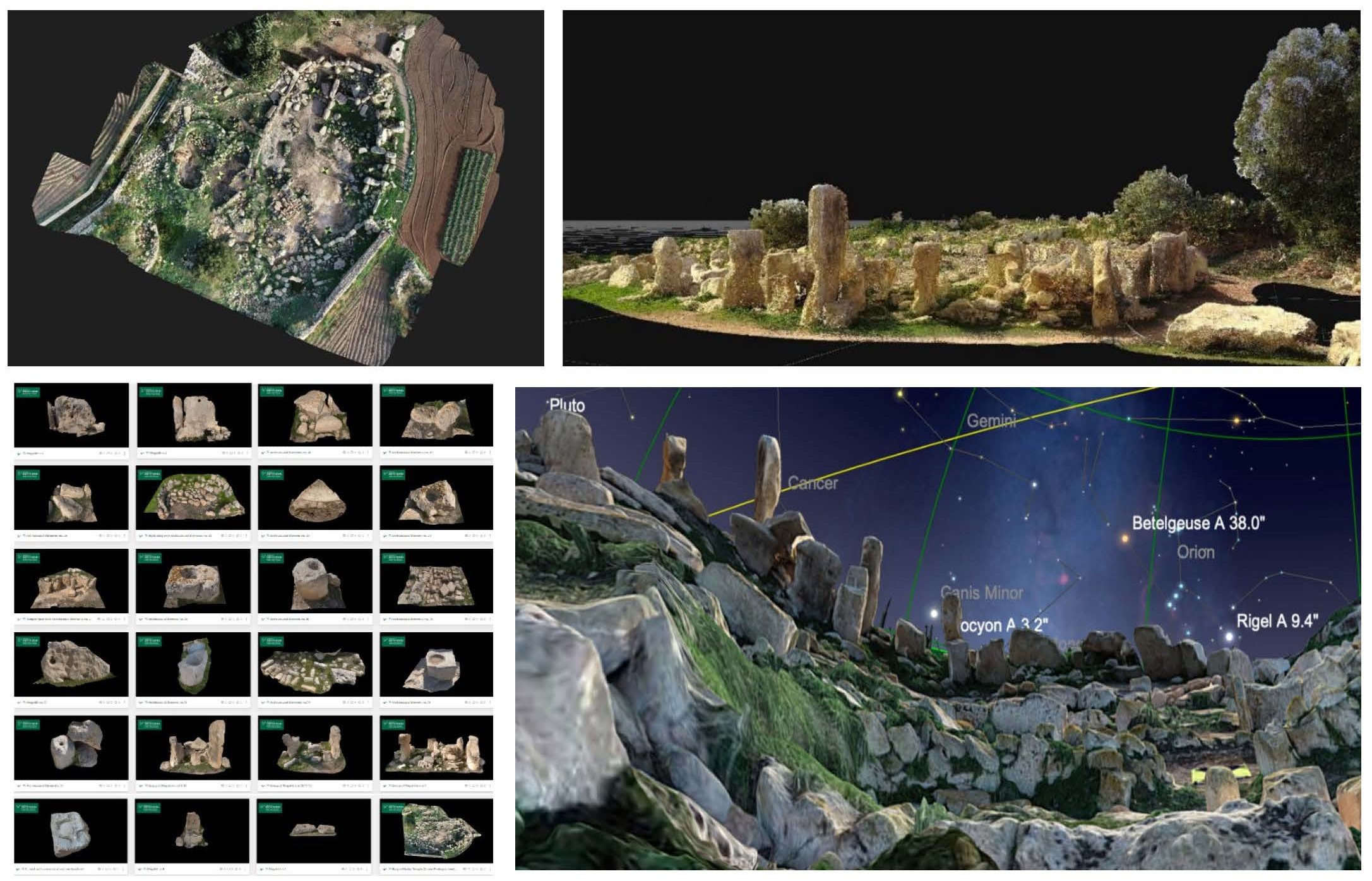Research
Prehistory of Malta in 3D
The Maltese megalithic civilization, dating back to approximately 3600-2500 BCE, is a fascinating ancient culture known for its remarkable stone structures. These impressive megalithic complexes provide valuable insights into the society's advanced engineering and spiritual practices, showcasing their profound connection with the cosmos, as testified by the UNESCO-listed Ħaġar Qim and Mnajdra temples, exhibiting intricate architectural feats and religious significance. This civilization remains a testament to the ingenuity and cultural richness of prehistoric Malta. The large scale of such complexes and the continuiing issues related with their conservation makes the application of 3D digitization and visualization techniques of great importance for documentation, study and dissemination purposes.
In 2022, USF IDEx leveraged terrestrial laser-scanning, terrestrial and aerial digital photogrammetry to 3D digitize a number of minor and poorly known megalithic site wif funerary significance (Ta’ Ħammut at Qalet Marku, Wied Żnuber at Hal Far – Birżebbuġa, Ta’ Ċenċ at Sannat) and the megalithic complex of Borġ in-Nadur, at Birzebbuġa to produce updated technical documentation for the site and use the 3D model for virtual archaeo-astronomical simulations.

Besides the overall 3D digitization of the complex, 24 3D models on individual megaliths or megalithic micro-clusters within the site have been captured via digital photogrammetry for the detailed study of features useful to understand the archaeo-astronomical significance of the site. A major study tool produced out of this research is an annoted 3D models of the entire complex with links to the individual 3D models of the megaliths.

3D Resources:
Annotated 3D model of the entire Borg in-Nadur megalithic complex